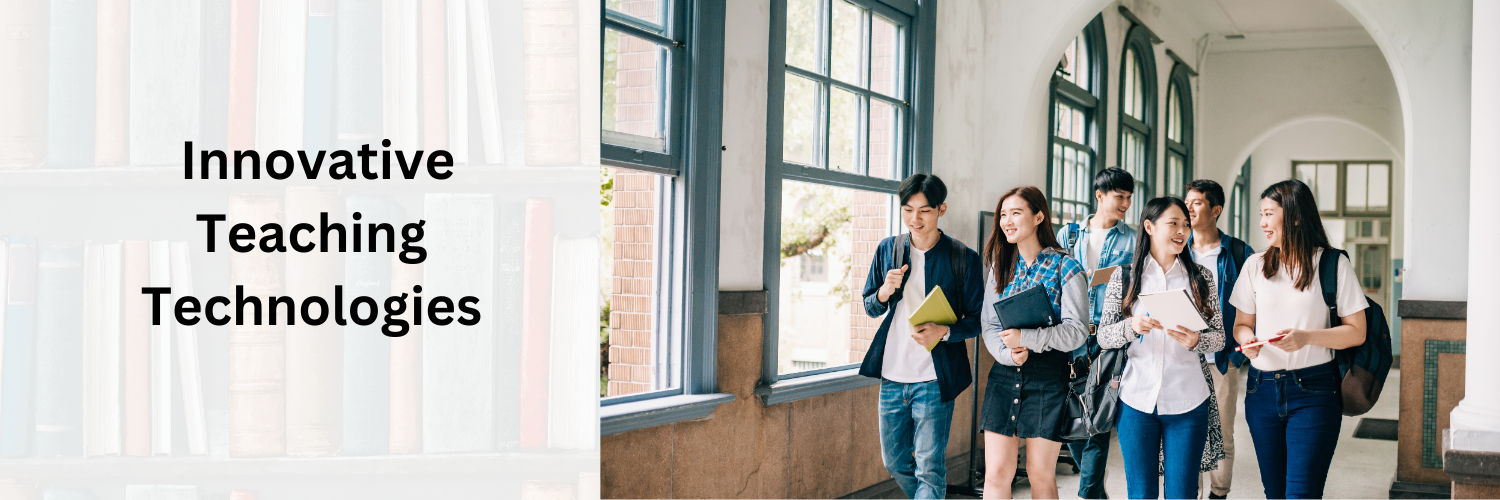Step into a classroom where technology isn’t just an add-on but a game-changer. For B.Ed students gearing up to make their mark as educators, the landscape of teaching is evolving rapidly with groundbreaking tools and innovations. Imagine students exploring ancient civilizations through virtual reality or receiving instant feedback through interactive apps. The modern classroom is becoming a dynamic hub of creativity and engagement, driven by the latest tech advancements. This guide will walk you through the essential teaching technologies that are set to revolutionize education. Get ready to discover how these innovations can transform your teaching approach and captivate your future students. The future of education is here.
Let’s dive in and explore how you can be at the forefront of this exciting transformation.
-
Smart Classrooms
Smart classrooms are all about blending technology with traditional teaching methods to create a more interactive learning environment.
- Interactive Whiteboards: These high-tech boards let teachers display multimedia content—like videos and animations—and interact with lessons in real-time. Teachers can also save and share notes, making it easier to revisit important points and engage students in a dynamic way.
- Document Cameras: These devices project documents and books onto a screen, making it simple to share text or images with the whole class. They’re perfect for demonstrating how to solve problems or analyze text together.
- Student Response Systems: Known as clickers, these tools allow students to answer questions instantly. Teachers can see responses in real-time, helping them adjust their teaching based on immediate feedback.
Why It Matters: Smart classrooms create a lively and interactive atmosphere, supporting different learning styles and providing instant feedback.
-
Educational Apps and Software
There’s a wealth of educational apps and software designed to support teaching and learning.
- Learning Management Systems (LMS): Platforms like Google Classroom and Moodle help manage assignments, track student progress, and facilitate communication. They make it easier to distribute materials and provide feedback outside of class.
- Subject-Specific Apps: Apps like Duolingo for language learning or Khan Academy for various subjects offer extra resources that can enhance what’s taught in the classroom. They provide interactive exercises and tutorials that cater to individual learning needs.
- Assessment Tools: Tools such as Socrative and Kahoot! allow teachers to create quizzes and polls that can be completed in real-time. This makes it easier to gauge student understanding and adjust teaching as needed.
Why It Matters: These apps and software streamline tasks, offer personalized learning experiences, and provide valuable resources to support teaching.
-
Virtual and Augmented Reality (VR and AR)
VR and AR are game-changers in how educational content is delivered.
- Virtual Reality (VR): VR immerses students in simulated environments, allowing them to explore historical events, conduct virtual experiments, or see scientific concepts in 3D. This immersive experience helps make complex ideas easier to grasp.
- Augmented Reality (AR): AR overlays digital information onto the real world. For example, AR apps can display 3D models of historical artifacts or scientific phenomena, letting students interact with and explore these elements in their own surroundings.
Why It Matters: VR and AR make learning more engaging by offering interactive and immersive experiences that bring abstract concepts to life.
-
Artificial Intelligence (AI) in Education
AI is making its mark in education with tools that offer personalized support.
- Personalized Learning Platforms: AI-driven platforms analyze student data to create customized learning paths. They adapt to individual needs, providing targeted content and recommendations to enhance learning.
- Chatbots: AI chatbots can help students with questions, provide additional resources, and offer tutoring support outside regular class hours. They ensure students get timely help and feedback.
Why It Matters: AI enables personalized education and support, helping educators tailor their approach to meet individual student needs.
-
Gamification
Gamification adds game-like elements to learning activities to make them more fun and engaging.
- Educational Games: Games designed for learning can make subjects like math or language more enjoyable. For instance, math games that reward problem-solving can reinforce skills in a playful way.
- Badges and Leaderboards: Recognizing achievements with badges or using leaderboards can motivate students by celebrating their progress and creating a sense of competition.
Why It Matters: Gamification taps into students’ natural love for play and competition, making learning more interactive and motivating.
-
Flipped Classroom Models
The flipped classroom model reverses the traditional teaching approach.
- Pre-Class Content: Students review new material at home through videos or readings, allowing them to learn at their own pace.
- In-Class Activities: Class time is then spent on applying the knowledge through discussions, problem-solving, or projects, encouraging active learning and deeper engagement with the content.
Why It Matters: This approach maximizes classroom time for interactive activities and allows students to engage more deeply with the material.
-
Assistive Technologies
Assistive technologies support students with various learning needs, ensuring an inclusive educational environment.
- Speech-to-Text Tools: These tools convert spoken words into text, helping students with writing difficulties or disabilities.
- Text-to-Speech Software: This software reads text aloud, aiding students with reading challenges or visual impairments and helping improve comprehension.
Why It Matters: Assistive technologies ensure that all students have access to education, regardless of their individual needs, and promote an inclusive learning atmosphere.
Conclusion
For B.Ed students, keeping abreast of the latest teaching technologies is crucial. By adopting innovations such as smart classrooms, educational apps, VR and AR, AI, gamification, flipped classrooms, and assistive technologies, future educators can craft engaging, effective, and inclusive learning environments. These advancements not only refine teaching methods but also equip educators to address the diverse needs of their students in a rapidly changing educational landscape. If you’re studying at one of the best B.Ed colleges in Ghaziabad, you’ll have the opportunity to dive into these technologies and prepare yourself to lead the classroom of tomorrow.






